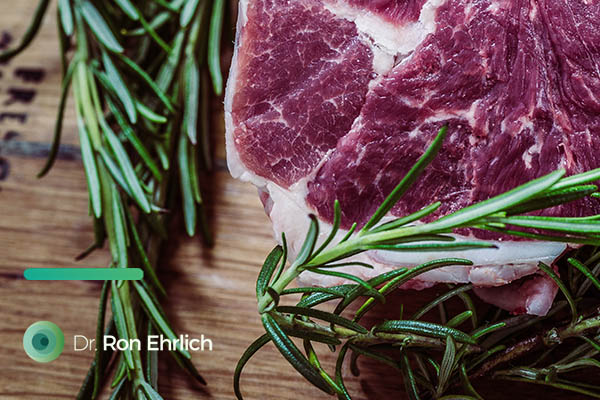Protein- it’s about quality, ethics and sustainability

Protein makes up an important part of our diet. However, when selecting the type of protein we eat it can be a challenge. Like fats, not all protein is created equal. A key fundamental question we have to ask is – how are these animals raised? The industrialisation of meat production raises important ethical issues about animal welfare and I believe for this reason alone, industrialised meat is best avoided.
Industrial vs Pasture
Concentrated Animal Feeding Operation (CAFO) is an animal feeding operation (AFO) that (a) confines animals for more than 45 days during a growing season, (b) in an area that does not produce vegetation, and (c) meets certain size. In those last 45 days, cattle can put on over 100kg and completely change its fat content, making it a more profitable item from a commercial perspective.
 The ethics of this kind of farming should make it an easier decision. It certainly is for me. In the ethics of eating animal meat, I believe we should consider the welfare of the animals and ensure their lives are as natural and comfortable as possible and we should honour the entire animal.
The ethics of this kind of farming should make it an easier decision. It certainly is for me. In the ethics of eating animal meat, I believe we should consider the welfare of the animals and ensure their lives are as natural and comfortable as possible and we should honour the entire animal.

What’s the Difference?
Not only does the welfare of the animal vary significantly, so too do the health benefits. Below is an example of the difference between grass-fed/finished and grain-fed beef:
- Grass-fed – Grass-fed beef can contain up to five times more omega-3 compared to grain-fed. Omega-3 fatty acids are associated with more of an anti-inflammatory effect in the body. Grass-fed beef has also been found to be higher in vitamin B6 and beta-carotene.
- Grain-fed – Grain-fed beef has been found to have higher levels of omega-6. High concentrations of omega-6 have been linked to memory problems, confusion, Alzheimer’s, weight gain and allergies.
The examples above are just some of the differences of grass-fed/finished and grain-fed beef on our health. One important thing to consider is the old saying ‘You are what you eat’. Furthermore to this is ‘You are what your food eats’. When our food is fed a nutritious diet that it has evolved to eat (grass) with all its minerals and vitamins, then we too receive these benefits.
Listen: Dr. Ron Ehrlich interviews Grant Hilliard. Post continues after audio.
Quantity and Sustainability
In addition to considering how our meat is raised, we need to consider the issue of sustainability. Our meat choices not only affect our own health but that or our planet. We do need protein for health, but how much is enough and are we eating too much?
Protein needs vary from individual to individual, but when we consider an average, even allowing for a range, we are almost certainly eating too much. As a guide, it is considered by many that 0.8 g/kg of body weight. So for me weighing in at 80kg, I would need 64grams of protein. How does that translate to the food you eat. As a simple guide here is the proportions of protein to the weight of meat;
-
- Beef, lamb or pork = 30% of weight is protein = 200g serve is equivalent to 66g protein
- Chicken or fish = 20% of weight is protein = 200g serve is equivalent to 40g protein
- Eggs = 10% of weight is protein = 70g egg is equivalent to 7g protein
Listen: Dr. Ron Ehrlich’s Healthy Bite Episode: A Busy Day. Post continues after audio.
Putting it into action
Purchase the best quality meat you can afford and have access to. Purchasing Grass-fed and finished means the animal remained on the pastures throughout its life. Another important thing to remember is that meat doesn’t have to feature at every meal. In fact, moderate consumption of meat is much healthier for us.
